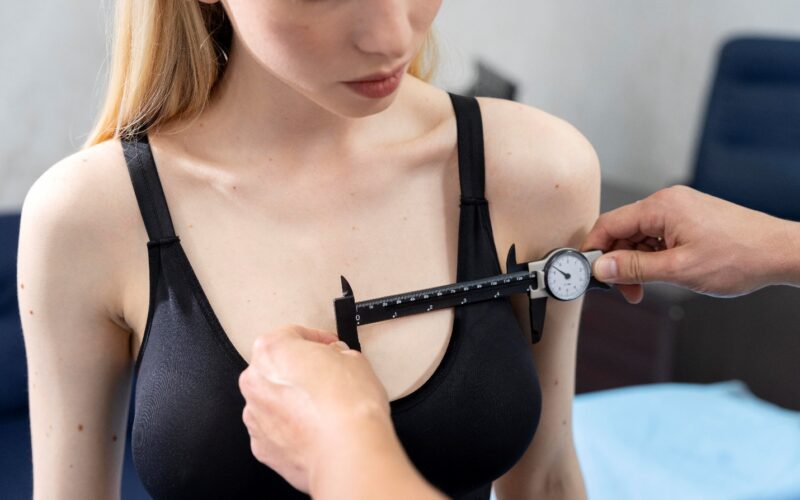Contents
Introduction:
Breast augmentation, also known as augmentation mammoplasty, is a surgical procedure designed to enhance the size and shape of a woman’s breasts. This cosmetic surgery has gained popularity over the years and is often sought after by individuals who desire fuller breasts for various reasons.
Procedure Overview:
The breast augmentation procedure typically involves the placement of implants behind the breast tissue or chest muscles. These implants can be filled with saline solution or silicone gel, and the choice between the two depends on the patient’s preferences and specific circumstances.
Techniques:
- Incision Placement: Surgeons may use different incision techniques, including inframammary (under the breast crease), periareolar (around the nipple), or transaxillary (in the armpit). The choice of incision depends on factors such as implant type, scarring concerns, and individual anatomy.
- Implant Placement: Implants can be positioned either subglandular (above the chest muscle) or submuscular (under the chest muscle). Each placement has its advantages and considerations, and the surgeon will discuss the most suitable option based on the patient’s body structure and desired outcome.
- Fat Transfer: In some cases, fat transfer techniques may be used, where fat is harvested from one part of the body (such as the thighs or abdomen) and injected into the breasts to add volume. This method is generally employed for subtle augmentations.
Candidate Considerations:
Before undergoing breast augmentation, individuals should carefully consider a range of factors. It is crucial to have realistic expectations about the outcomes of the surgery and to understand that breast implants may not last a lifetime, often requiring replacement or removal after a certain period.
Candidates for breast augmentation should be in good overall health and not currently pregnant or breastfeeding. Additionally, open communication with a qualified plastic surgeon is vital to discuss personal goals, potential risks, and the various options available.
Types of Implants:
There are different types of breast implants available, each with its own set of advantages and considerations. Saline implants are filled with sterile salt water and offer a firmer feel, while silicone implants have a more natural texture resembling human fat. The choice between the two depends on factors such as personal preference, body type, and desired results.
Recovery and Aftercare:
After the surgery, patients can expect a recovery period during which they may experience swelling, bruising, and discomfort. It is crucial to follow post-operative care instructions provided by the surgeon to promote healing and minimize the risk of complications.
Risks and Complications:
As with any surgical procedure, breast augmentation carries certain risks and potential complications. These may include infection, changes in nipple sensation, and issues related to the implants themselves, such as leakage or rupture. Regular check-ups with a healthcare professional are essential to monitor the condition of the implants over time.
Results:
Breast augmentation can yield transformative results, enhancing self-confidence and body image. The outcome is influenced by factors such as implant choice, surgical technique, and individual healing processes. Patients can typically expect a fuller and more symmetrical bust, improving overall body proportions.
Conclusion:
Breast augmentation is a personal choice that requires careful consideration and consultation with a qualified plastic surgeon. While the procedure can enhance confidence and body image, it is crucial for individuals to be well-informed about the process, potential risks, and aftercare involved. Choosing the right surgeon and maintaining open communication throughout the entire process are key elements in achieving satisfactory results.

